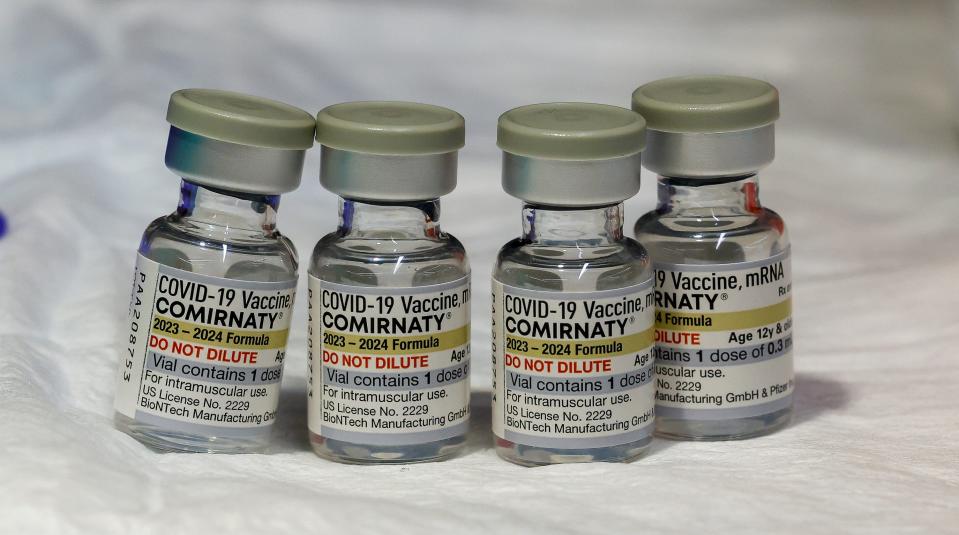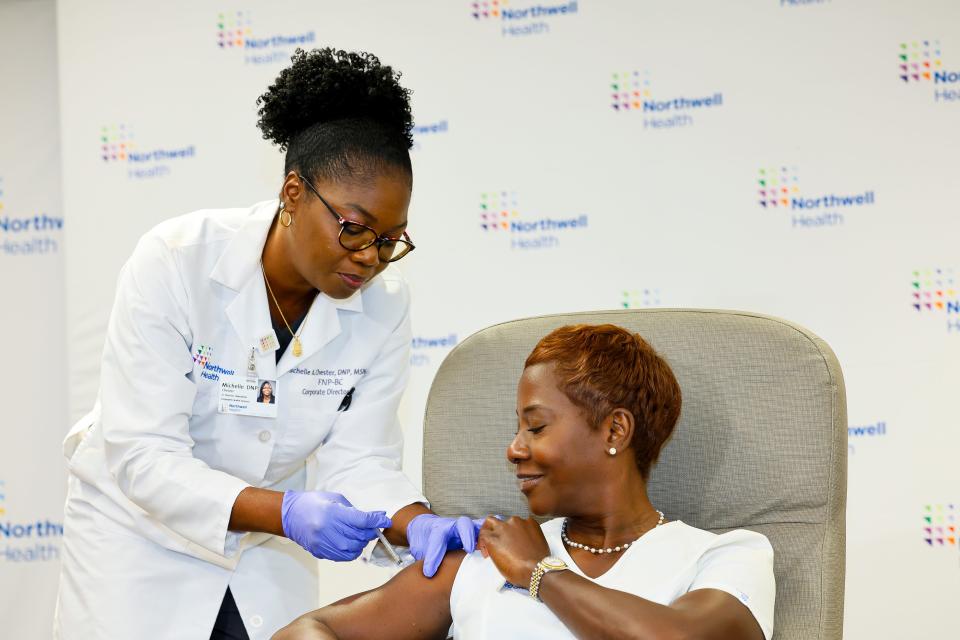How many New Yorkers are getting new COVID vaccines? Check your region's early total
- Oops!Something went wrong.Please try again later.
At least 120,318 New Yorkers outside New York City received the updated COVID-19 vaccines during the first two weeks of a vaccination campaign marred by early insurance coverage hiccups and supply chain delays, state data show.
While that number of doses is an undercount due to the end of mandatory reporting of COVID-19 shots, the initial tracking suggested uptake of the new vaccines appeared to fall well short of vaccine launches earlier in the pandemic.

Still, the majority of doses, nearly 60%, reached the most vulnerable ages of 65 and above since the new vaccines began arriving Sept. 20.
Vaccine statistics for New York City were not immediately available Tuesday, as health officials continue to collect information about the vaccination effort.
COVID deaths up in NY Uptick in NY's COVID deaths last month. Could mask mandates, restrictions return?
How many COVID vaccine doses in each NY region?
What follows are the number of COVID-19 vaccine doses administered by region, excluding New York City, as of Sept. 28.
Mid-Hudson and Finger Lakes reported 23,226 doses and 17,701 doses, respectively, while Western New York reported 12,264 doses.
The Southern Tier reported 6,805 doses while the Mohawk Valley and North Country had 3,760 and 3,074, respectively.
Long Island saw the highest total, at 31,429 doses, while Central New York and the Capital Region had 13,701 and 8,952, respectively.
Supply chain: New COVID vaccine rollout foiled by early supply chain delays? What pharmacies said
What ages are getting the new COVID vaccines in NY?
Nearly 71,000 doses went to ages 65 and older, while another 47,400 doses went to ages 18 to 64. Pediatric vaccinations included about 2,000 doses for ages 12 to 17; 265 doses for ages 5 to 11; and 14 doses for six months though 4 years.
State Health Commissioner James McDonald recently called on all New Yorkers to get the new COVID-19 vaccine, citing the uptick in infections and deaths in recent weeks. He noted "COVID is a treatable disease" and the updated vaccines "will help reduce your chance of serious illness and hospitalization."
"Remember, it’s about personal protection, personal prevention, and personal wellness," he added in a statement.

Why tracking new COVID vaccines is so difficult
Tracking distribution of the new COVID-19 vaccines is difficult because drug makers, pharmacies and providers have taken over the effort from state and federal agencies, which oversaw all aspects of vaccinations and reported data in real-time earlier in the pandemic.
Further, the end of the pandemic emergency declaration this past spring changed how COVID shots get tracked by the government, as adults must now consent to reporting.
Still, the initial estimates of COVID vaccinations underscored that early uptake may have been higher without supplies running short in some communities, which drug makers denied in statements despite some pharmacies confirming isolated shortages.
This article originally appeared on Rockland/Westchester Journal News: COVID vaccine 2023: How many outside NYC got the updated jab?

